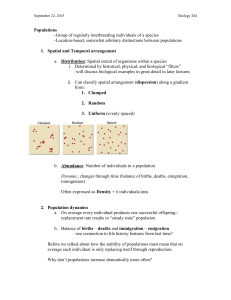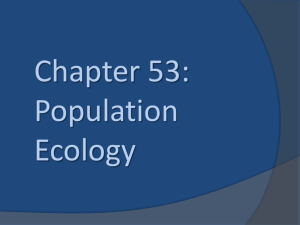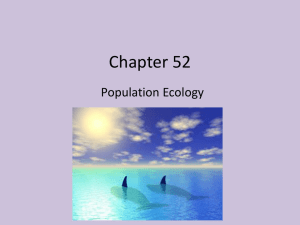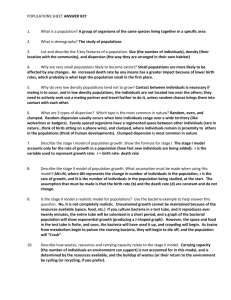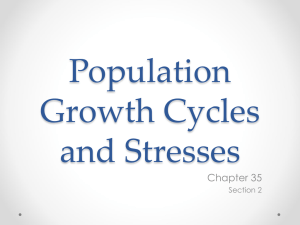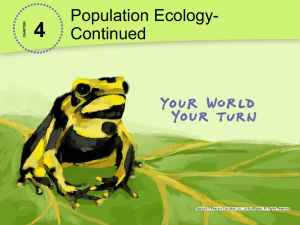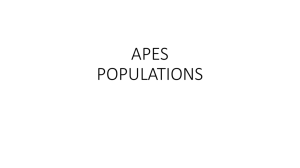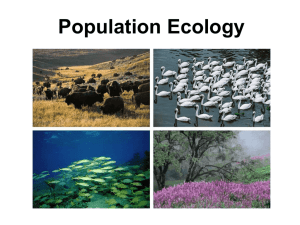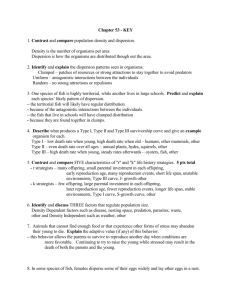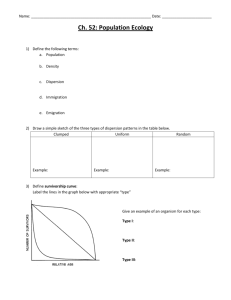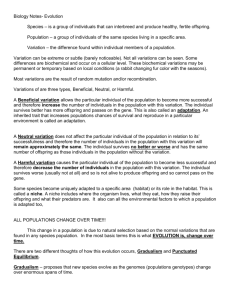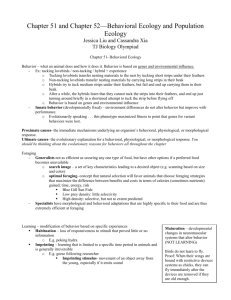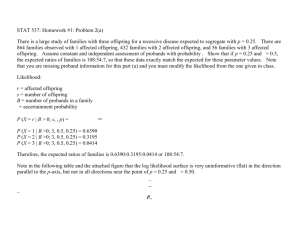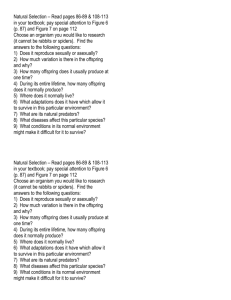concept 53.1-53.5 - Madison County Schools
advertisement
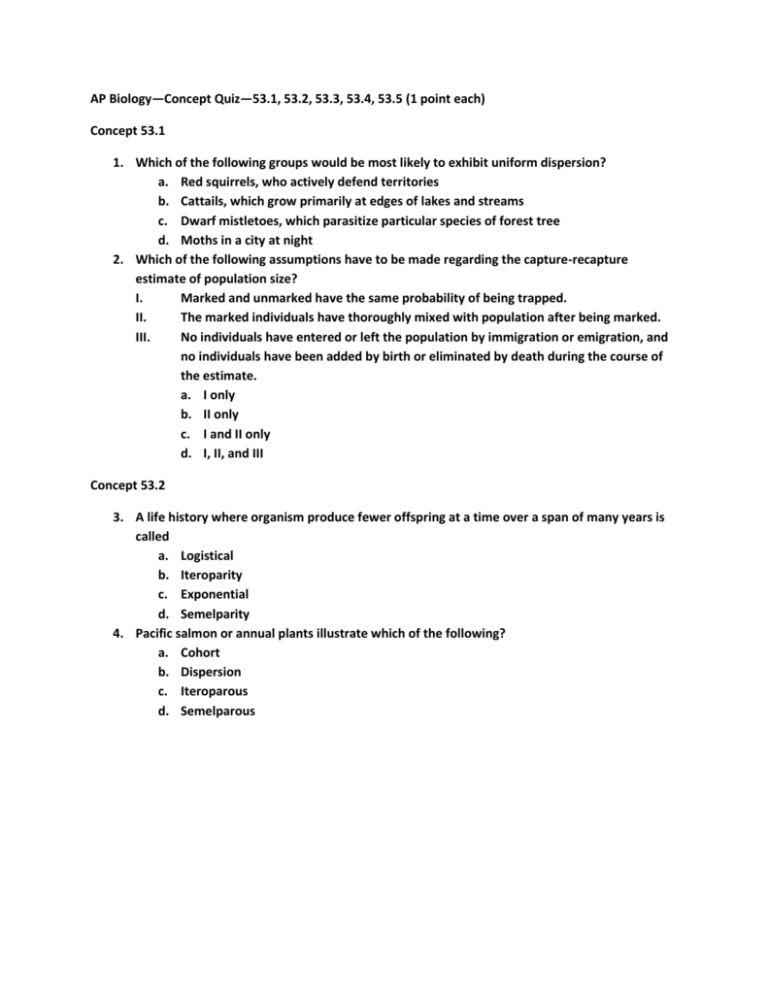
AP Biology—Concept Quiz—53.1, 53.2, 53.3, 53.4, 53.5 (1 point each) Concept 53.1 1. Which of the following groups would be most likely to exhibit uniform dispersion? a. Red squirrels, who actively defend territories b. Cattails, which grow primarily at edges of lakes and streams c. Dwarf mistletoes, which parasitize particular species of forest tree d. Moths in a city at night 2. Which of the following assumptions have to be made regarding the capture-recapture estimate of population size? I. Marked and unmarked have the same probability of being trapped. II. The marked individuals have thoroughly mixed with population after being marked. III. No individuals have entered or left the population by immigration or emigration, and no individuals have been added by birth or eliminated by death during the course of the estimate. a. I only b. II only c. I and II only d. I, II, and III Concept 53.2 3. A life history where organism produce fewer offspring at a time over a span of many years is called a. Logistical b. Iteroparity c. Exponential d. Semelparity 4. Pacific salmon or annual plants illustrate which of the following? a. Cohort b. Dispersion c. Iteroparous d. Semelparous Concept 53.3 5. Imagine that you are managing a large ranch. You know from historical accounts that wild sheep used to live there, but they have been extirpated. You decide to reintroduce them. After doing some research to determine what might be an appropriately sized founding population, you do so. You then watch the population increase for several generations, and graph the number of individuals (vertical axis) against the number of generations (horizontal axis). The graph will appear as a. A diagonal line, getting higher with each generation b. An “S,” increasing with each generation c. An upside down “U.” d. A “J,” increasing with each generation Concept 53.4 6. Carrying capacity is a. Seldom reached by marine producers and consumers because of the vast resources of the ocean. b. The maximum population size that a particular environment can support c. Fixed for most species over most of their range most of the time. d. Determined by density and dispersion data. 7. Which of the following characterizes relatively K-selected populations? a. Offspring with good chances of survival b. Many offspring per reproductive episode c. Small offspring d. Early parental reproduction Concept 53.5 8. Density-dependent regulation of populations can be contributed by which of the following? a. Predation b. The accumulation of toxic wastes c. Intraspecific competition for nutrients d. All of these 9. Which of the following is a density-independent factor limiting human population growth? a. Social pressure for birth control b. Earthquakes c. Pollution d. Plagues 10. Consider several human populations of equal size and net reproductive rate, but different in age structure. The population that is likely to grow the most during the next 30 years is the one with the greatest fraction of people in which age range? a. 40-50 years b. 30-40 years c. 20-30 years d. 10-20 years Grid-in questions (bonus—1 point) 11. In 2005, the United States had a population of approximately 295,000,000 people. If the birth rate was 13 births for every 1,000 people, approximately how many births occurred in the United States in 2005? key 1. 2. 3. 4. 5. 6. 7. 8. 9. 10. 11. A B B D D B A D B D 3,835,000
